For many employees, the termination of an employment relationship is a drastic event that can be associated with uncertainty and existential fears.
In Germany, the Dismissal Protection Act (KSchG) protects employees from socially unjustified dismissals and offers them the opportunity to take legal action against the ineffective termination of their employment relationship. But how does such an action work and what are the chances of success? This article sheds light on the key aspects of an action for protection against dismissal, from the legal basis and the legal process to the factors that influence the outcome. A sound understanding of this matter is of great importance not only for those affected, but also for employers in order to avoid legal pitfalls.
The importance of the Dismissal Protection Act and the role of the dismissal protection lawsuit
The Dismissal Protection Act is a cornerstone of German employment law and aims to strike a balance between the employer's interest in entrepreneurial freedom and the employee's protection against arbitrary dismissal. It applies to companies with generally more than ten employees and requires that the employee has been employed by the company for more than six months.
The action for protection against dismissal is the central instrument for having the effectiveness of a dismissal reviewed in court. It offers employees the chance to keep their job or at least receive an appropriate severance payment. Without this option, employees would be virtually defenceless against their employer in cases of dismissal. The deadline for filing an action for protection against dismissal is three weeks after receipt of the written notice of dismissal - a deadline that must be adhered to, as otherwise the dismissal is deemed to be effective, even if it was incorrect. This underlines the urgency of seeking legal advice immediately after receiving notice of termination, ideally from a specialist employment lawyer.
The process of a dismissal protection claim: step by step
The process of an action for unfair dismissal is structured and follows certain court procedures:
1. timely filing of action
As already mentioned, compliance with the three-week period for filing a complaint from receipt of the notice of termination is of crucial importance. The complaint must be submitted in writing to the competent labor court. As a rule, a lawyer will take care of this step in order to avoid formal errors.
2nd conciliation hearing
Once the claim has been filed, the labor court usually schedules a date for a so-called conciliation hearing within a few weeks. The aim of this first hearing is to find an amicable solution between the employer and employee and thus avoid a lengthy legal dispute. A possible severance payment is often discussed here. The judge tries to persuade the parties to reach a settlement. If an agreement is reached in the conciliation hearing, the action for protection against dismissal is ended and an often nerve-wracking and costly trial is avoided.
3rd chamber hearing (dispute hearing)
If no agreement is reached in the conciliation hearing, the proceedings will be continued in a chamber hearing. This is where a more detailed discussion of the facts takes place. Both parties present their arguments and evidence. The court examines the validity of the dismissal. This includes examining whether the dismissal is socially justified (personal, behavioral or operational) and whether formal requirements, such as consultation with the works council, have been met. Witnesses may be heard and documents examined.
4. judgment or further settlement
After the chamber hearing, the court can make a ruling that declares the termination either effective or ineffective. However, a settlement is often reached at the chamber hearing or at a later stage, particularly if the prospects of success for one of the parties are uncertain. A settlement offers both sides planning security and avoids the risk of an unfavorable ruling.
5 Appeal and revision
An appeal can be lodged with the regional labor court within one month against a ruling by the labor court. In certain cases, an appeal to the Federal Labor Court is also possible. These appeals prolong the process considerably and are usually associated with additional costs.
Prospects of success of an action for unfair dismissal: influencing factors
The chances of success of an action for unfair dismissal depend on a number of factors. There is no blanket statement, as each case must be assessed individually. Nevertheless, some key areas can be identified that contribute significantly to the outcome:
1. reason for termination and social justification
The most important factor is the reason for termination given by the employer. A dismissal must be socially justified. This means that it must be either personal (e.g. due to long-term illness), behavioral (e.g. due to breach of duty) or operational (e.g. due to closure of the business).
- Termination for conduct-related reasons: Here, the employer must prove that the employee has culpably breached their duties and that a warning has usually preceded this. The proportionality of the dismissal plays a major role.
- Termination for personal reasons: This is often associated with long-term illnesses. The employer must demonstrate that the employee's performance is permanently impaired and that no less severe measures (e.g. reorganization of the workplace) are possible.
- Dismissal for operational reasons: In this case, the employer must prove that urgent operational requirements preclude the continuation of the employment relationship. In addition, a so-called social selection must be carried out, in which employees who are less worthy of social protection (e.g. younger, childless employees with a shorter period of employment) must be dismissed first. Errors in the social selection are a frequent starting point for a successful dismissal protection claim.
2 Formal effectiveness of the termination
In addition to the material reason for termination, formal aspects are also decisive. Notice of termination must always be given in writing. The correct consultation of the works council (if present) is also a mandatory requirement for the effectiveness of the dismissal. Errors in the works council consultation regularly lead to the termination being invalid.
3. role of the lawyer and negotiating skills
An experienced lawyer for employment law is invaluable for the success of an action for unfair dismissal. He knows the current case law, can realistically assess the chances of success and develop the best possible strategy. The lawyer's negotiating skills are crucial in the conciliation hearing and the chamber hearing in order to achieve a favorable settlement, particularly with regard to severance pay. A good lawyer will examine all relevant legal aspects and act in the interests of his client.
4. prospect of severance pay
Even if the German Dismissal Protection Act does not provide for a general entitlement to severance pay, severance pay is often the central negotiating objective in a dismissal protection action. In particular, if the employer's dismissal is contestable, he is often prepared to pay a severance payment in order to avoid a lengthy process and the risk of reinstatement. The amount of the severance payment depends on various factors, including the length of service, the amount of salary, the age of the employee and the strength of the arguments in the lawsuit. A common rule of thumb for severance pay is half a month's gross salary per year of employment, but this is only a rough guide and can vary greatly in individual cases.
Effects of an action for unfair dismissal on employees and employers
An action for unfair dismissal has far-reaching consequences for both sides of an employment relationship.
For employees, it offers the opportunity to enforce their rights, keep their job or receive financial compensation. It can help to secure their financial and professional future. However, going to court is often associated with stress and uncertainty.
For employers, an action for unfair dismissal entails considerable administrative and financial expense. They have to deal with the proceedings, instruct a lawyer if necessary and, in the event of an invalid dismissal, expect to be reinstated or receive a severance payment. As a result, employers should prepare dismissals carefully and protect themselves legally in order to minimize the risk of a successful dismissal protection claim. The existence of protection against dismissal and legal action against dismissal helps to ensure that employers do not make their personnel decisions arbitrarily, but adhere to the legal requirements.
Conclusion
The action for protection against dismissal is an essential instrument in German employment law that protects employees from unjustified dismissals and offers them an effective way to enforce their rights. Although the process of an action for protection against dismissal is clearly structured, it involves numerous legal nuances. The chances of success depend heavily on the individual case constellation, in particular the reason for dismissal, compliance with formal regulations and the skill of the lawyer involved. For employees, it is essential to observe the three-week deadline for filing a lawsuit and to seek professional advice immediately after receiving notice of termination. For employers, it is important to always prepare dismissals carefully and in a legally sound manner in order to minimize the risk of an action for unfair dismissal and the associated consequences. Ultimately, the possibility of taking legal action against dismissal contributes significantly to stability and fairness on the German labor market.





